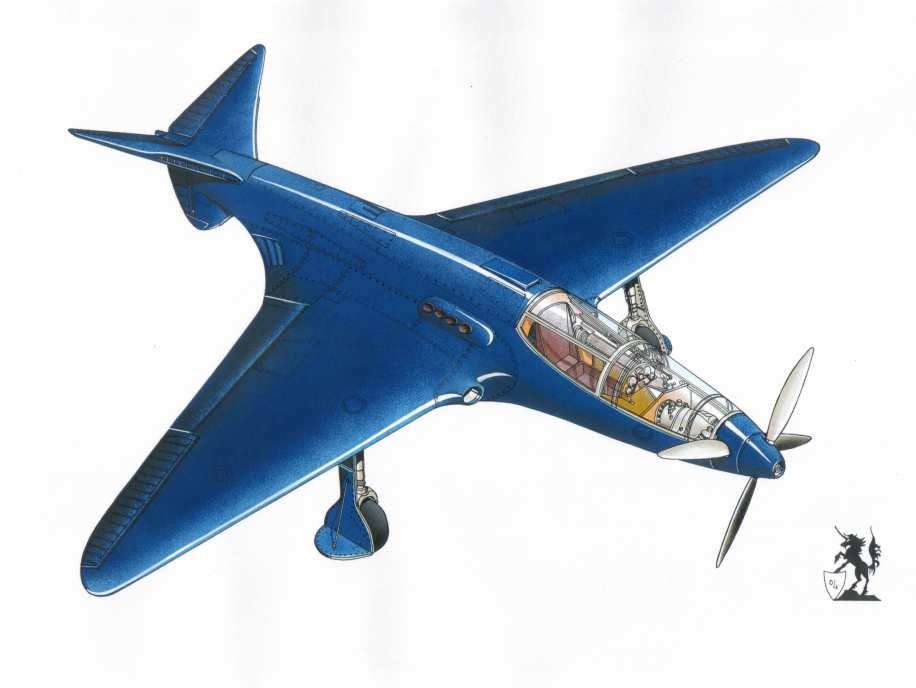 03-07-2010, 05:42 PM
03-07-2010, 05:42 PM
|
#12 (permalink)
|
|
Master EcoModder
Join Date: Aug 2008
Location: The Wet Coast, Kanuckistan.
Posts: 1,275
Thanks: 100
Thanked 306 Times in 178 Posts
|
I proclaim, Hazzah!!!
 http://www.bugattiaircraft.com/plane.htm
http://www.bugattiaircraft.com/plane.htm
Quote:
Tragically the Bugatti 100P airplane never flew, the Germans invaded Paris before it was 100% ready. The airplane surprisingly survived the war, and still exists. The airplane is now in the EAA museum in Oshkosh, USA. Both engines exist, and were built into Bugatti race-cars.
Some of the airplaneīs characteristics:
Extremely streamlined design, made possible by placing the two engines behind the cockpit.
Forward swept wings
A sandwich-construction in wood, where balsa wood between two layers of hard wood makes a very light, very strong ans stiff construction.
Propulsion by two counter-rotating propellers, driven from the two engines by axles under the pilotīs elbow.
The airplane was equipped with ground adjustable propellers. Propellers with in-flight adjustable pitch were being developed
The engines were special developments of racecar engines, 8 cylinder 4.9 litre with compressor and many magnesium parts, approx. 450hp.
Automatic wing-flaps, that changed the wingprofile for extra lift or less drag. Adjustment automatic according to airspeed, throttle etc.
This system was also capable of acting as an airbrake, or be used during dives. The same system also automatically lowered and raised the retractable landing gear.
Special cooling system with radiators in the fuselage, air entering at the leading edge of the stabilisers. The air flowed through the fuselage to the front, exiting at the trailing edge of the wing.
"Y" tail.
|
__________________
Vortex generators are old tech. My new and improved vortex alternators are unstoppable.
"Its easy to explain how rockets work but explaining the aerodynamics of a wing takes a rocket scientist.


|
|
|

|